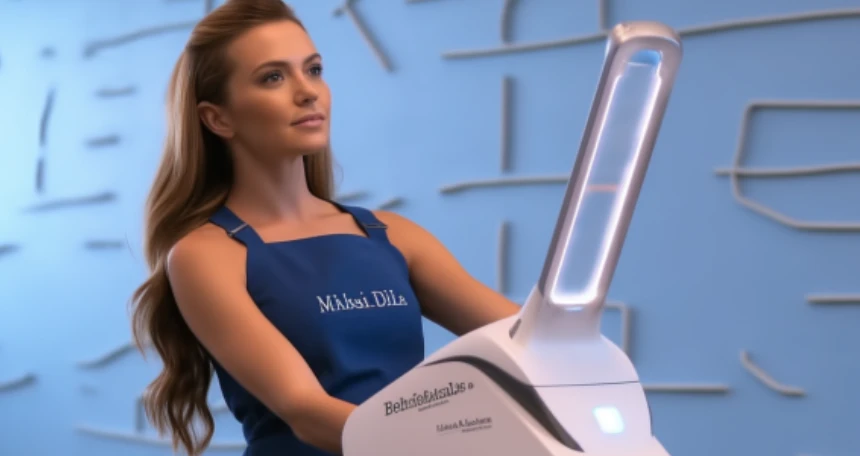Rosacea is a common skin condition that affects millions of people worldwide. It is characterized by redness, inflammation, and visible blood vessels on the face. While there is no known cure for rosacea, there are various treatments available to help manage the symptoms. One such treatment is PDL (Pulsed Dye Laser) treatment, which has been proven to be effective in reducing redness and improving the overall appearance of the skin.

The PDL laser treatment works by using a concentrated beam of light to target and destroy the blood vessels responsible for the redness and inflammation associated with rosacea. The treatment is non-invasive and typically requires multiple sessions for optimal results. Patients undergoing PDL laser treatment often experience minimal discomfort and downtime.
One of the main benefits of PDL laser treatment is its ability to significantly reduce facial redness. The laser targets the blood vessels near the skin's surface, causing them to collapse and be absorbed by the body. This leads to a visible reduction in redness and a more even skin tone. Depending on the severity of the rosacea, the average cost for a single PDL laser treatment session can range from $200 to $600.
In addition to reducing redness, PDL laser treatment can also help to minimize the appearance of visible blood vessels. The laser selectively heats and destroys the blood vessels, causing them to be reabsorbed by the body over time. This results in a smoother complexion and a reduction in the visibility of blood vessels. Multiple sessions may be required to achieve the desired outcome.
Another benefit of PDL laser treatment is its effectiveness in reducing acne-like breakouts that often accompany rosacea. The laser targets the sebaceous glands in the skin, reducing their size and activity. This leads to a decrease in oil production and a reduction in the frequency and severity of acne flare-ups associated with rosacea.
PDL laser treatment is suitable for most skin types and can be used on various areas of the body affected by rosacea. The most commonly treated areas include the cheeks, nose, and chin. The effectiveness of the treatment may vary depending on the individual's skin type, severity of rosacea, and adherence to post-treatment care.
It is important to note that PDL laser treatment is not a one-time solution for rosacea. Maintenance treatments may be required to sustain the results achieved. Additionally, it is crucial to protect the skin from sun exposure and use gentle skincare products to prevent further irritation.
Common FAQs about PDL laser treatment for rosacea:
1. Is PDL laser treatment painful? The majority of patients report minimal discomfort during the procedure. Topical anesthesia or cooling devices may be used to further alleviate any discomfort. 2. How many sessions of PDL laser treatment are needed? The number of sessions needed will vary depending on the individual's condition and response to treatment. On average, 3 to 5 sessions are required for optimal results. 3. Are there any side effects of PDL laser treatment? Temporary redness, swelling, and bruising are common side effects that usually subside within a few days. In rare cases, there may be changes in pigmentation or scarring, but these are extremely rare. 4. Can PDL laser treatment be used in conjunction with other therapies? Yes, PDL laser treatment can be combined with other therapies such as topical creams and oral medications to provide enhanced results. 5. Is PDL laser treatment suitable for everyone with rosacea? PDL laser treatment is generally safe for most individuals with rosacea. However, it is best to consult with a qualified dermatologist or medical professional to determine if it is the right treatment option for you.



